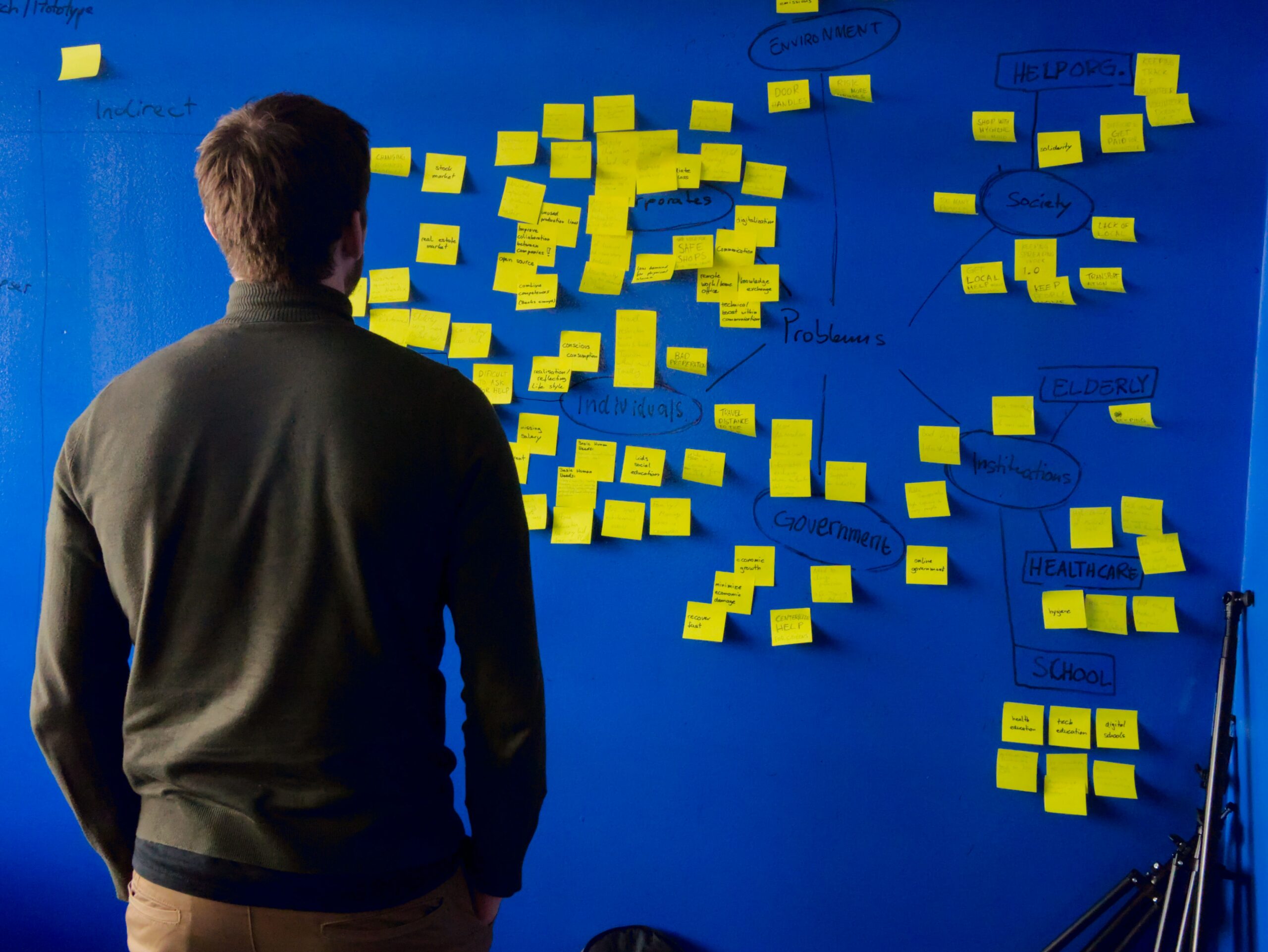Understanding the Fundamentals of Product Innovation
Innovation lies at the heart of progress, driving societies forward through solutions that make life better, easier, or more enjoyable. Before diving into the practical aspects of product invention, it’s crucial to understand the foundational principles that separate successful innovations from failed attempts.
Identifying Real Problems Worth Solving
Product innovation begins with identifying genuine problems that affect people’s lives. These problems can range from minor inconveniences to major challenges, but they must be substantial enough that people would be willing to pay for a solution. The key is to observe daily life carefully, noting friction points where existing solutions fall short or where no solution exists at all. Many successful inventors start by experiencing a problem firsthand, then realizing others share the same challenge.
For instance, the invention of the wheeled suitcase came from observing travelers struggling with heavy luggage through airports. The problem had existed for decades, but it took someone to recognize it as a solvable issue worth addressing. When identifying problems, focus on those that are persistent rather than temporary, and affect a significant number of people or create substantial difficulty for a specific group.
The Difference Between Ideas and Innovations
While ideas are abundant, innovations are comparatively rare. An idea is a concept or thought that may solve a problem, but an innovation is the successful implementation of that idea in a way that creates value and finds acceptance in the market. The path from idea to innovation requires rigorous development, testing, and refinement.
Consider the early personal computers. Many people had ideas about making computers accessible to average consumers, but successful innovations like the Apple II combined technical capability with user-friendly design and practical functionality. The distinction lies in the execution – how well the final product addresses the identified problem and how effectively it can be produced, distributed, and used by its intended audience.
Key Characteristics of Successful Product Inventions
Successful product inventions share several fundamental characteristics that set them apart from failed attempts. First, they solve a clear and definable problem in a way that’s meaningfully better than existing solutions. This improvement must be significant enough to overcome the natural resistance to change and adoption of new products.
Second, successful inventions are feasible to produce at a cost that allows for profitable sale while remaining affordable for their target market. Many great ideas fail because they can’t be manufactured efficiently or would be too expensive for their intended customers.
Third, they arrive at the right time, when technology, market conditions, and consumer readiness align. The digital wallet concept existed years before widespread adoption, but success required the confluence of smartphone ubiquity, secure payment technology, and consumer comfort with digital transactions.
Research and Market Analysis
Conducting Customer Research and Interviews
Thorough customer research forms the backbone of successful product development. This process involves more than casual conversations or assumptions about what people want. It requires systematic investigation through interviews, surveys, and observation of potential users in their natural environment.
When conducting interviews, focus on understanding not just what people say they want, but why they want it and how they currently solve the problem. Ask about their frustrations with existing solutions and what would make their lives easier. Document specific examples and stories rather than general opinions, as these provide deeper insights into real needs and use cases.
Analyzing Existing Solutions and Competitors
A comprehensive analysis of existing solutions and competitors reveals opportunities for innovation and helps avoid redundant development. Study both direct competitors who solve the same problem and indirect competitors who address it differently. Look for gaps in their offerings, common customer complaints, and areas where current solutions fall short.
This analysis should extend beyond features and specifications to understand business models, distribution channels, and pricing strategies. Consider why certain solutions have succeeded or failed, and what lessons can be applied to your invention.
Understanding Your Target Market Size and Demographics
Market size and demographic analysis help determine if an invention has sufficient commercial potential. This involves estimating both the total addressable market (everyone who could potentially use your product) and the serviceable obtainable market (those you can reasonably expect to reach and convert into customers).
Consider not just the number of potential customers but their characteristics, including age, income, location, and buying habits. This information shapes everything from product design to marketing strategy and pricing decisions. Remember that different demographic groups may have different needs and preferences, even when facing the same basic problem.
Evaluating Market Trends and Future Potential
Market trends provide crucial context for product innovation. They help predict whether the problem you’re solving will become more or less relevant over time, and how the solution might need to evolve. Consider technological trends, social changes, regulatory developments, and economic factors that could impact your invention’s success.
Look beyond current conditions to anticipate future developments. For example, the rise of remote work has created new problems and opportunities that didn’t exist a few years ago. Similarly, increasing environmental consciousness has created markets for sustainable alternatives to existing products. Understanding these trends helps position your invention for long-term success rather than just meeting current needs.
Developing Your Product Concept
Brainstorming and Ideation Techniques
Product development thrives on structured creativity. Effective brainstorming combines free-thinking exploration with methodical analysis. Begin with divergent thinking sessions where no idea is too outlandish. Write down every possibility, even those that seem impractical at first glance. Many breakthrough innovations started as seemingly impossible ideas that were refined into practical solutions.
One powerful technique is analogous thinking – looking at how similar problems are solved in different industries or in nature. For example, Velcro was invented after its creator observed how burrs stuck to his dog’s fur. Another effective approach is the “worst possible idea” method, where deliberately generating bad solutions often leads to insights about what would actually work well.
Creating Initial Product Sketches and Descriptions
Once initial ideas are generated, begin visualizing them through sketches and detailed descriptions. These early visualizations don’t need to be artistic masterpieces – they serve to communicate concepts and work through practical considerations. Use multiple views and annotations to explore how the product might work, how users would interact with it, and what problems might arise.
Written descriptions should complement visual representations. Describe not just what the product is, but how it would be used in real situations. Create scenarios that walk through the user’s experience from start to finish. This process often reveals hidden complexities and opportunities for improvement that weren’t apparent in the initial concept.
Defining Core Features and Benefits
Every successful product has a clear core value proposition – the essential benefit it provides to users. Start by listing all possible features, then ruthlessly prioritize them. Distinguish between must-have features that directly address the core problem and nice-to-have additions that might complicate development without adding significant value.
Focus on benefits rather than features. While features describe what a product does, benefits explain why those features matter to users. For example, a feature might be “automatic temperature adjustment,” but the benefit is “never having to worry about overheating or freezing.” This benefit-focused thinking helps maintain clarity about what truly matters to your target users.
Building a Minimum Viable Product (MVP)
The MVP represents the simplest version of your product that can validate your core assumptions about what users need and value. It shouldn’t try to include every planned feature – instead, focus on the essential elements that allow real users to solve their core problem. This might mean starting with a manual process that will later be automated, or a simplified version of your eventual vision.
Creating an MVP requires careful consideration of what “minimal” and “viable” mean for your specific product. Too minimal, and you won’t learn enough about user needs. Too complex, and you’ll waste resources testing features that might not matter. The goal is to find the sweet spot that provides meaningful learning opportunities while keeping development time and costs manageable.
Prototyping and Testing
Different Types of Prototypes
Prototypes serve different purposes throughout the development process. Conceptual prototypes might be simple sketches or mock-ups that help visualize ideas. Functional prototypes demonstrate how key features will work, even if they don’t look like the final product. Aesthetic prototypes show how the product will look and feel, while technical prototypes prove that critical components or systems function as intended.
Each type of prototype answers specific questions about your product. A paper prototype might help test user interface flow, while a 3D printed model could reveal ergonomic issues. Understanding these different purposes helps you choose the right prototyping approach for each stage of development.
Choosing the Right Prototyping Method
Select prototyping methods based on what you need to learn and validate. Consider factors like cost, time, available resources, and the fidelity needed to get meaningful feedback. Low-fidelity prototypes like paper models or wireframes are excellent for early testing of concepts and layouts. High-fidelity prototypes that closely resemble the final product are better for testing specific interactions and gathering detailed user feedback.
Modern prototyping tools include traditional materials, 3D printing, digital design software, and rapid prototyping services. Each has its place in the development process. The key is matching the method to your current needs and constraints while maintaining focus on what you’re trying to learn.
Gathering and Implementing User Feedback
User feedback should be gathered systematically throughout the prototyping process. Create specific test scenarios that reflect real-world usage situations. Observe users interacting with your prototype without providing guidance – their confusion or mistakes often reveal important insights about your design.
Document feedback carefully, looking for patterns across different users. Pay special attention to problems that multiple users encounter, as these often indicate fundamental issues with your design. Remember that users may not always be able to articulate what they need, so watch what they do as much as what they say.
Iterating Based on Test Results
Iteration is the heart of successful product development. Each round of testing should lead to specific, actionable improvements in your design. Organize feedback into categories: critical issues that must be addressed, important improvements that should be made if possible, and suggested enhancements that might be considered for future versions.
Create a clear process for incorporating changes, testing them, and validating that they actually solve the identified problems without creating new ones. Sometimes solving one issue reveals or creates others, so maintain a holistic view of how changes affect the entire user experience. Each iteration should bring you closer to a product that effectively solves your users’ problems in a way they find intuitive and valuable.
Protecting Your Invention
Understanding Different Types of Intellectual Property
Intellectual property protection comes in several forms, each serving a specific purpose in safeguarding your invention. Patents protect novel inventions and unique functional aspects of products, giving you exclusive rights to make, use, and sell your invention for a limited time. Trademarks protect brand identities, including names, logos, and distinctive design elements that identify your product in the marketplace. Trade secrets protect confidential business information that gives you a competitive advantage, while copyrights protect original creative works.
Understanding which types of protection apply to your invention is crucial. Some products may benefit from multiple forms of protection – for example, a new smartphone might have utility patents on its technical innovations, design patents on its appearance, trademarks on its brand elements, and trade secrets protecting its manufacturing processes. Each type of protection has different requirements, durations, and territorial limitations.
Patent Search and Filing Process
Before investing heavily in patent protection, conduct a thorough patent search to ensure your invention is truly novel. This search should cover not just existing patents but also published patent applications, scientific literature, and commercial products. While preliminary searches can be done independently using patent databases, professional searches often reveal relevant prior art that might be missed by inexperienced searchers.
The patent filing process begins with deciding between a provisional and non-provisional application. Provisional applications provide a one-year placeholder while you develop your invention further, but they must be followed by a non-provisional application to obtain patent protection. The non-provisional application requires detailed descriptions, drawings, and claims that define the scope of your patent protection. The entire process typically takes two to three years and involves multiple communications with patent examiners.
Non-Disclosure Agreements and Legal Protection
Non-disclosure agreements (NDAs) form a crucial first line of defense when discussing your invention with others. These legal documents should be used whenever sharing confidential information with potential partners, manufacturers, investors, or employees. A well-crafted NDA specifies what information is considered confidential, how it can be used, and for how long the confidentiality obligations persist.
Beyond NDAs, consider employment agreements and contractor agreements that clearly establish ownership of intellectual property developed during the course of work. These agreements should address improvements and modifications to your invention, ensuring you maintain control over its development. Keep detailed records of all disclosures and agreements, as they may become important if disputes arise later.
Working with Patent Attorneys
Patent attorneys bring specialized expertise in both technical and legal aspects of intellectual property protection. They help evaluate patentability, develop filing strategies, and craft patent claims that provide the broadest possible protection for your invention. While their services represent a significant investment, experienced patent attorneys often save money in the long run by avoiding costly mistakes and securing stronger patent protection.
Choose a patent attorney with experience in your technology area. They should be able to understand your invention quickly and suggest effective strategies for protection. Regular communication is essential – your attorney should keep you informed of important deadlines, explain office actions from patent examiners, and discuss options for responding to rejections or objections.
Bringing Your Product to Market
Creating a Business Plan
A comprehensive business plan serves as both a roadmap for your product’s commercialization and a tool for attracting investment. Begin with a clear executive summary that captures the essence of your product and its market opportunity. Detail your target market, competitive advantage, and financial projections based on realistic assumptions about market penetration and growth.
Your business plan should address key risks and mitigation strategies, including technical challenges, market acceptance, competition, and regulatory requirements. Include detailed financial models showing projected revenues, costs, and capital requirements. The plan should evolve as you gather more information and validate your assumptions through market testing.
Funding Options and Investment Strategies
Funding options range from personal savings and friends-and-family investments to venture capital and corporate partnerships. Each source of funding comes with different expectations, terms, and levels of control. Early-stage funding might come from crowdfunding platforms or angel investors, while later stages might involve venture capital or strategic corporate investors.
Consider the timing and amount of funding needed at each stage of development. Early funding should focus on proving your concept and developing your minimum viable product. Later rounds can fund manufacturing setup, inventory, and market expansion. Be prepared to demonstrate clear milestones and progress to attract and retain investors.
Manufacturing Considerations
Manufacturing decisions impact product quality, cost, and scalability. Consider whether to manufacture in-house or partner with contract manufacturers. Evaluate different manufacturing locations based on costs, quality control, intellectual property protection, and proximity to markets. Develop detailed specifications and quality control procedures to ensure consistent product quality.
Build relationships with multiple suppliers to reduce dependency and manage supply chain risks. Consider how manufacturing choices affect your product’s environmental impact and sustainability. Plan for scaling production as demand grows, including equipment investments, workforce training, and inventory management systems.
Distribution and Sales Channels
Distribution strategy determines how your product reaches customers. Direct-to-consumer channels offer higher margins and closer customer relationships but require significant marketing investment. Retail channels provide broader reach but involve lower margins and less control over the customer experience. Online marketplaces offer quick market entry but face intense competition.
Develop channel-specific pricing strategies that maintain profitability while remaining competitive. Consider how different channels complement each other and how to manage potential channel conflicts. Build strong relationships with key distribution partners, providing them with the training, marketing support, and incentives needed to successfully sell your product.
Common Pitfalls and How to Avoid Them
Managing Development Costs
Development costs can quickly spiral out of control without proper management and oversight. Many inventors fall into the trap of perfecting their product indefinitely, adding features and refinements that delay market entry and drain resources. Establish clear budgets for each development phase and tie spending to specific milestones and deliverables. Track all expenses meticulously, including often-overlooked costs like prototype iterations, testing equipment, and legal fees.
Create contingency plans for unexpected technical challenges or cost overruns. Consider using staged development approaches where you validate critical assumptions before committing significant resources. Work with developers and suppliers who understand the importance of cost control and can suggest economical alternatives when appropriate. Remember that every dollar spent on development must eventually be recovered through product sales.
Timing Your Market Entry
Market timing can make the difference between success and failure. Entering too early means facing an unprepared market, while entering too late means competing with established players. Study market indicators carefully to identify the optimal launch window. These indicators might include consumer readiness, supporting technology availability, regulatory environment, and competitive landscape.
Avoid the common mistake of rushing to market with an inadequately tested product. Conversely, don’t wait for perfect conditions that may never arrive. Look for timing signals like increasing customer inquiries, competitor activity, or changes in related technologies. Consider soft launches or regional rollouts to test market reception before committing to full-scale distribution.
Scaling Production Effectively
Many products fail during the scaling phase when demand outstrips production capacity or quality suffers under volume pressure. Start planning for scale early in the development process, considering how design choices will affect manufacturing efficiency. Build relationships with suppliers and manufacturers who can grow with you, and maintain backup options for critical components and processes.
Create detailed production scaling plans that address workforce training, quality control procedures, and equipment capacity. Consider automation opportunities that become cost-effective at higher volumes. Monitor key performance indicators like production efficiency, defect rates, and inventory turnover. Plan for seasonal variations and demand spikes by building appropriate buffer capacity.
Maintaining Quality Control
Quality problems can destroy a product’s reputation quickly, especially in today’s connected world where negative reviews spread rapidly. Establish comprehensive quality control systems that cover the entire production process, from incoming materials to finished product testing. Document all quality procedures and train personnel thoroughly in their implementation.
Create clear quality standards and testing protocols for each product attribute. Implement statistical process control methods to identify and correct quality issues before they affect customers. Build feedback loops between customer service, production, and product development teams to address quality issues promptly. Remember that quality control extends beyond manufacturing to packaging, shipping, and even customer support.
Invest in quality testing equipment and procedures appropriate for your production volume. Consider third-party testing and certification when appropriate for your market. Build quality considerations into supplier agreements and maintain regular audits of supplier quality systems. Create troubleshooting procedures for common quality issues and maintain detailed records of quality-related incidents and resolutions.
Quality control becomes increasingly critical as production scales up. Establish clear lines of responsibility for quality at each stage of production. Create incentive systems that reward quality performance rather than just production volume. Build a culture where quality is everyone’s responsibility and employees feel empowered to stop production when quality issues arise.
Remember that quality control extends to the entire customer experience, not just the physical product. Monitor customer feedback, warranty claims, and return rates as indicators of quality performance. Create systems for rapid response to quality issues, including customer communication plans and recall procedures if necessary. Regular review and updating of quality control procedures helps prevent quality drift and maintains consistent product performance as your business grows.


















 You have the great idea. It may not change the entire world (although it might) but it will definitely change your world by bringing something into the world that wasn’t there before, or that truly is the better mousetrap.
You have the great idea. It may not change the entire world (although it might) but it will definitely change your world by bringing something into the world that wasn’t there before, or that truly is the better mousetrap.
 It’s not a cliche, nor is it some kind of marketing gambit, to say that anyone can be an inventor. Learning how to be an inventor is a process just like learning how to ride a bicycle or learning how to draw. Some people say that you need some special kind of ‘talent’ to draw, that it is innate and that you can’t ‘learn’ it. Yet many books, courses and educators have
It’s not a cliche, nor is it some kind of marketing gambit, to say that anyone can be an inventor. Learning how to be an inventor is a process just like learning how to ride a bicycle or learning how to draw. Some people say that you need some special kind of ‘talent’ to draw, that it is innate and that you can’t ‘learn’ it. Yet many books, courses and educators have